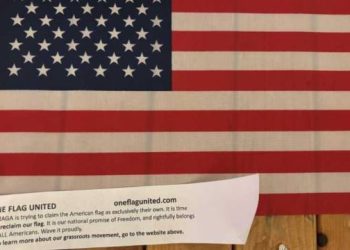Health and Human Services Secretary Robert F. Kennedy Jr. and Secretary of Agriculture Brooke Rollins were seen holding ice cream cones during a press conference at the U.S. Department of Agriculture on July 14, 2025, in Washington, D.C.
Kennedy’s leadership at HHS is producing results, as several federal agencies announced that the International Dairy Foods Association (IDFA) will phase out artificial dyes in ice cream by 2028.
The Department of Health and Human Services will work in coordination with the Department of Agriculture and the Food and Drug Administration to support this transition. The dairy industry has voluntarily agreed to remove artificial colors including Red 3, Red 40, Green 3, Blue 1, Blue 2, Yellow 5, and Yellow 6 from ice cream and other frozen dairy products.
This initiative aligns with Kennedy’s efforts under President Donald Trump’s directive to “Make America Healthy Again.” He has consistently spoken out against the use of artificial dyes, linking them to chronic illnesses, particularly in children.
“I applaud the International Dairy Foods Association for stepping up to eliminate certified artificial colors,” Kennedy stated. “The American people have made it clear — they want real food, not chemicals.” He continued, “Together with Secretary of Agriculture Brooke Rollins and U.S. Food and Drug Administration Commissioner Dr. Marty Makary, we’re holding the food industry accountable and driving a nationwide effort to Make America Healthy Again.”
Secretary Rollins added, “I appreciate IDFA members for spearheading this new initiative and finding ways to promote President Trump’s Make America Healthy Again agenda. Each one of these endeavors helps families make better choices and pursue healthier lives.”
FDA Commissioner Dr. Marty Makary called the change a “significant shift” in the food industry’s response to the Trump administration’s push for improved public health. “By voluntarily removing artificial dyes, the dairy industry is leading the way toward cleaner ingredients and greater consumer trust,” Makary said. “At FDA, we’re proud to support this kind of proactive leadership that puts families and public health first.”
Michael Dykes, president and CEO of the IDFA, said, “Americans are passionate about their ice cream. And the IDFA Ice Cream Commitment will ensure wholesome, indulgent ice cream products made with real milk from American dairy farmers remain a special part of our lives as state and federal policies evolve.”
This development follows Kennedy’s earlier ultimatum to major food producers like PepsiCo and Kraft Heinz to eliminate artificial food dyes from their products. He described the initiative as a “strong desire and urgent priority” of the Trump White House.
Just last month, Hershey also announced plans to remove synthetic dyes such as Red 40, Yellow 5, and Blue 1 from its products by the end of 2027.
Still, one question remains: Why did it take so long for this to happen?
It appears that progress is being made now because the Department of Health and Human Services is finally taking consumer health seriously. While many await further action from Kennedy on pharmaceutical companies, this move signals forward momentum in food safety and public health.
Improving the nation’s health can also enhance its freedom. As harmful ingredients are gradually removed from the food supply, the United States seems to be taking real steps toward a healthier future.
 Telegram is where we really talk. Don't miss out!
Telegram is where we really talk. Don't miss out!








